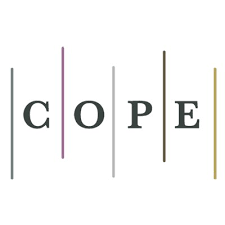Designing and Solving Location-Routing-Allocation Problems in a Sustainable Blood Supply Chain Network of Blood Transport in Uncertainty Conditions
DOI:
https://doi.org/10.52547/ijimes.1.4.32DOR:
https://dorl.net/dor/20.1001.1.27832678.2021.1.4.4.0Keywords:
Location-Routing-Allocation, Blood Supply Chain Network Design, Perishability in Transport, Meta-heuristic Algorithms, UncertaintyAbstract
Purpose: In this paper, a location-routing-allocation problem in a multi-objective blood supply chain network was designed to reduce the total cost of the supply chain network, the maximum unmet demand from distribution of goods, and decline greenhouse gas emissions due to the transport of goods among different levels of the network. The network levels considered for modeling include blood donation clusters, permanent and temporary blood transfusion centers, major laboratory centers and blood supply points. Other objectives included determining the optimal number and location of potential facilities, optimal allocation of the flow of goods between the selected facilities and determining the most suitable transport route to distribute the goods to customer areas in uncertainty conditions.
Methodology: Given that the model was NP-hard, the NSGA II and MOPSO algorithms were used to solve the model with a priority-based solution.
Findings: The results of the design of the experiments showed the high efficiency of the NSGA II algorithm in comparison with the MOPSO algorithm in finding efficient solutions.
Originality/Value: This study addresses the issue of blood perishability from blood sampling to distribution to customer demand areas.
Downloads
References
Nahr, J. G., Bathaee, M., Mazloumzadeh, A., & Nozari, H. (2021). Cell Production System Design: A Literature Review. International Journal of Innovation in Management, Economics and Social Sciences, 1(1), 16-44. https://doi.org/10.52547/ijimes.1.1.16
Nozari, H., Szmelter-Jarosz, A., & Ghahremani-Nahr, J. (2021). The Ideas of Sustainable and Green Marketing Based on the Internet of Everything—The Case of the Dairy Industry. Future Internet, 13(10), 266. https://doi.org/10.3390/fi13100266
Nory, F., & Ghahremani Nahr, J. (2019). Robust-possibilistic optimization method at design of a pharmaceutical supply chain network under uncertainty and discount on purchase the raw material. Journal of Modeling in Engineering, 17(58), 249-266. DOI: 10.22075/jme.2019.13798.1358
Jabbarzadeh, A., Fahimnia, B., & Seuring, S. (2014). Dynamic supply chain network design for the supply of blood in disasters: a robust model with real world application. Transportation Research Part E: Logistics and Transportation Review, 70, 225-244. https://doi.org/10.1016/j.tre.2014.06.003
Ghahremani Nahr, J., Ghodratnama, A., IzadBakhah, H. R., & Tavakkoli Moghaddam, R. (2019). Design of multi-objective multi-product multi period green supply chain network with considering discount under uncertainty. Journal of Industrial Engineering Research in Production Systems, 6(13), 119-137. DOI: 10.22084/ier.2017.8877.1421
Nahr, J. G., Nozari, H., & Sadeghi, M. E. (2021). Green supply chain based on artificial intelligence of things (AIoT). International Journal of Innovation in Management, Economics and Social Sciences, 1(2), 56-63. https://doi.org/10.52547/ijimes.1.2.56
Van Zyl, G. J. (1963). Inventory control for perishable commodities. North Carolina State University. Dept. of Statistics.
Sampson, M., Kong, C., Patel, A., Unwin, R., & Jacobs, H. S. (1996). Ambulatory blood pressure profiles and plasminogen activator inhibitor (PAI‐1) activity in lean women with and without the polycystic ovary syndrome. Clinical endocrinology, 45(5), 623-629.
Hinojosa, Y., Puerto, J., & Fernández, F. R. (2000). A multiperiod two-echelon multicommodity capacitated plant location problem. European Journal of Operational Research, 123(2), 271-291. https://doi.org/10.1016/S0377-2217(99)00256-8
Daskin, M. S., Coullard, C. R., & Shen, Z. J. M. (2002). An inventory-location model: Formulation, solution algorithm and computational results. Annals of operations research, 110(1), 83-106. https://doi.org/10.1023/A:1020763400324
Shen, Z. J. M., Coullard, C., & Daskin, M. S. (2003). A joint location-inventory model. Transportation science, 37(1), 40-55.
Pereira, A. (2005). Blood inventory management in the type and screen era. Vox sanguinis, 89(4), 245-250. https://doi.org/10.1111/j.1423-0410.2005.00700.x
Fahimnia, B., Jabbarzadeh, A., Ghavamifar, A., & Bell, M. (2015). Supply chain design for efficient and effective blood supply in disasters. International Journal of Production Economics. https://doi.org/10.1016/j.ijpe.2015.11.007
Ghasemi, S. E., Hatami, M., Hatami, J., Sahebi, S. A. R., & Ganji, D. D. (2016). An efficient approach to study the pulsatile blood flow in femoral and coronary arteries by Differential Quadrature Method. Physica A: Statistical Mechanics and its Applications, 443, 406-414. https://doi.org/10.1016/j.physa.2015.09.039
Osorio, A. F., Brailsford, S. C., Smith, H. K., Forero-Matiz, S. P., & Camacho-Rodríguez, B. A. (2017). Simulation-optimization model for production planning in the blood supply chain. Health care management science, 20(4), 548-564. https://doi.org/10.1007/s10729-016-9370-6
Ensafian, H., Yaghoubi, S., & Yazdi, M. M. (2017). Raising quality and safety of platelet transfusion services in a patient-based integrated supply chain under uncertainty. Computers & Chemical Engineering, 106, 355-372. https://doi.org/10.1016/j.compchemeng.2017.06.015
Zahiri, B., & Pishvaee, M. S. (2017). Blood supply chain network design considering blood group compatibility under uncertainty. International Journal of Production Research, 55(7), 2013-2033. https://doi.org/10.1080/00207543.2016.1262563
Habibi-Kouchaksaraei, M., Paydar, M. M., & Asadi-Gangraj, E. (2018). Designing a bi-objective multi-echelon robust blood supply chain in a disaster. Applied Mathematical Modelling, 55, 583-599. https://doi.org/10.1016/j.apm.2017.11.004
Ghahremani Nahr, J., Kian, R., & Rezazadeh, H. (2018). A modified priority-based encoding for design of a closed-loop supply chain network using a discrete league championship algorithm. Mathematical problems in engineering, 2018. https://doi.org/10.1155/2018/8163927
Ghahremani-Nahr, J., Kian, R., & Sabet, E. (2019). A robust fuzzy mathematical programming model for the closed-loop supply chain network design and a whale optimization solution algorithm. Expert systems with applications, 116, 454-471. https://doi.org/10.1016/j.eswa.2018.09.027
Published
How to Cite
Issue
Section
License
Copyright (c) 2021 Ramin Eskandari, Hamid Reza Feili

This work is licensed under a Creative Commons Attribution 4.0 International License.












